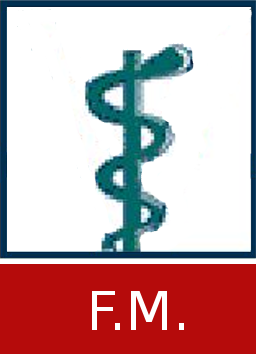Etude des fonctions de l’ostéomoduline chez le zebrafish et dans des cultures primaires d’ostéoblastes
Grisart, Juliane 
Promotor(s) :
Sanchez, Christelle 
Date of defense : 6-Jul-2021 • Permalink : http://hdl.handle.net/2268.2/12471
Details
| Title : | Etude des fonctions de l’ostéomoduline chez le zebrafish et dans des cultures primaires d’ostéoblastes |
| Author : | Grisart, Juliane 
|
| Date of defense : | 6-Jul-2021 |
| Advisor(s) : | Sanchez, Christelle 
|
| Committee's member(s) : | Muller, Marc 
Fillet, Marianne 
Dumoulin, Mireille 
|
| Language : | French |
| Keywords : | [en] Zebrafish [en] Osteomodulin [en] Osteoblast [en] Proteoglycan [en] Bone [en] Cartilage [fr] Ostéomoduline [fr] Os [fr] Cartilage [fr] Ostéoblaste [fr] Zebrafish [fr] Protéoglycane |
| Discipline(s) : | Human health sciences > Rheumatology |
| Funders : | EOS |
| Research unit : | mSKIL |
| Name of the research project : | Join-t-against-osteoarthritis preservation and repair of the joint |
| Target public : | Researchers Professionals of domain Student |
| Institution(s) : | Université de Liège, Liège, Belgique |
| Degree: | Master en sciences biomédicales, à finalité approfondie |
| Faculty: | Master thesis of the Faculté de Médecine |
Abstract
[en] Osteomodulin (OMD) is a proteoglycan of the SLRP (Small leucine-rich repeat proteoglycans) family. This protein is specifically expressed in mineralised tissue. Like other SLRPs, OMD is involved in the organisation of the ECM. Little is known about the functions of OMD and its involvement in the organisation of the bone matrix. The study of osteomodulin takes place in the context of osteoarthritis. Osteoarthritis is a complex disease which is characterised by a large number of phenotypes involving the different elements of a joint such as the articular cartilage, the subchondral bone or the synovium. The underlying molecular mechanisms of this disease are not yet well defined. The expression of OMD is reduced in osteoblasts from osteoarthritis patients and a better understanding of the activity of this protein in bone could therefore help to understand its involvement in bone-driven osteoarthritis. Studies of non-sclerotic osteoblast cultures have shown a slight increase in alkaline phosphatase activity when treated with OMD. The functions of omd have also been studied in the zebrafish. The zebrafish model is widely used to study skeletal physiology and pathology. Injection of omd mRNA develops significant ventralization and skeletal malformation phenotypes in this model. These results suggest that OMD may regulate the activity of morphogens including BMP2 in the bone and/or cartilage ECM.
[fr] L’ostéomoduline (OMD) est un protéoglycane de la famille des « small leucine-rich repeat proteoglycans » (SLRPs). Cette protéine est exprimée de manière spécifique dans les tissus minéralisés. Comme les autres SLRPs, l'OMD est impliqué dans l'organisation de la matrice extracellulaire (MEC). Les fonctions de l'OMD et son implication dans l'organisation de la matrice osseuse sont peu connues. L’étude de l’ostéomoduline s’inscrit dans le contexte de l’arthrose. L’arthrose est une maladie complexe qui est caractérisée par un grand nombre de phénotypes impliquant les différents éléments d’une articulation tels que le cartilage articulaire, l’os sous-chondral ou encore la synovie. Les mécanismes moléculaires sous-jacents de cette maladie ne sont pas encore bien définis. L’expression de l’OMD est réduite dans les ostéoblastes de patients arthrosiques et une meilleure compréhension de l’activité de cette protéine dans l’os pourrait donc permettre de comprendre son implication dans l’arthrose. L’étude de cultures d’ostéoblastes non-sclérotiques a permis de montrer une légère augmentation de l’activité de l’alcaline phosphatase lorsque celles-ci sont traitées à l’OMD. L’omd a également été étudiée chez le zebrafish. Le modèle de zebrafish est largement utilisé pour étudier la physiologie et la pathologie du squelette. L’injection d’ARNm d’omd développe dans ce modèle des phénotypes de ventralisations et de malformations du squelette importantes. Ces résultats suggèrent que l’OMD pourrait être un régulateur de l’activité des morphogènes dont BMP2 au niveau de la MEC osseuse et/ou cartilagineuse.
File(s)
Document(s)
Cite this master thesis
The University of Liège does not guarantee the scientific quality of these students' works or the accuracy of all the information they contain.


 Master Thesis Online
Master Thesis Online



 Etude des fonctions de l'osteomoduline.pdf
Etude des fonctions de l'osteomoduline.pdf

